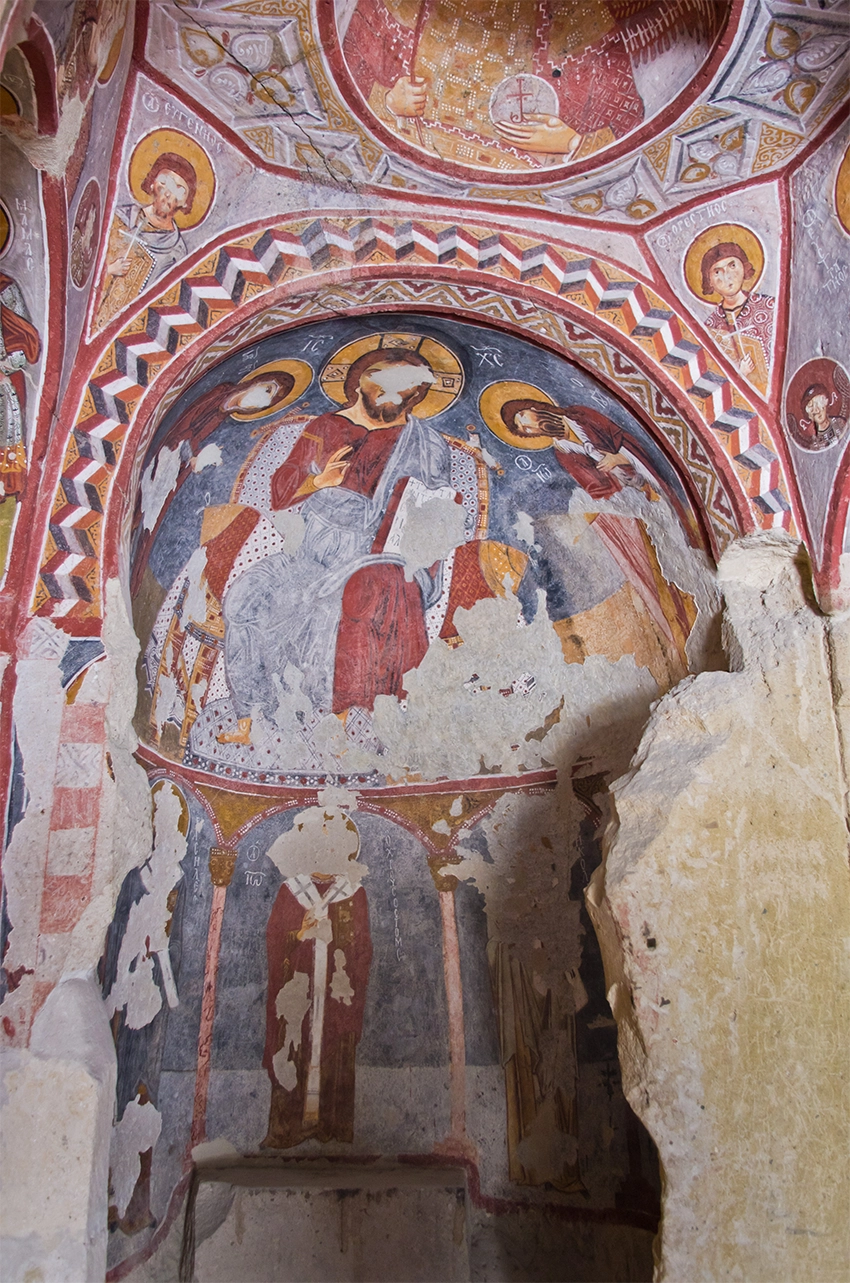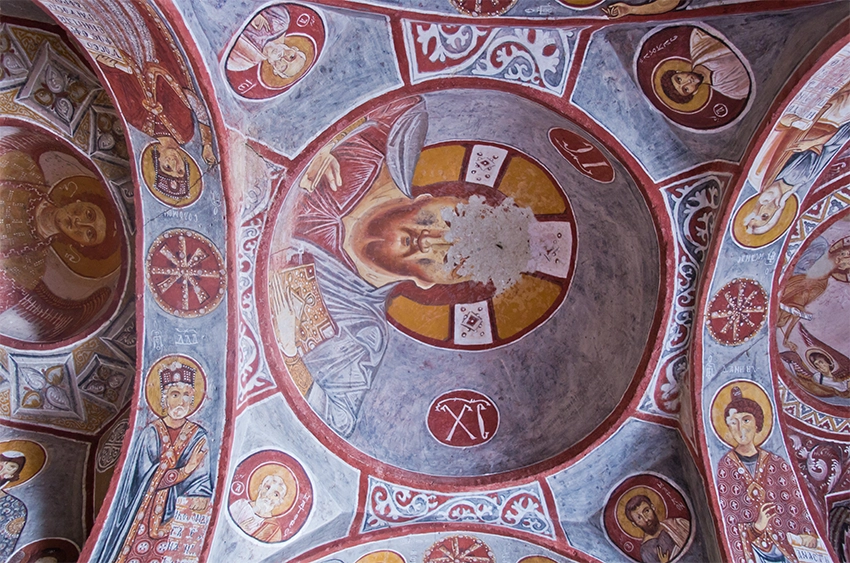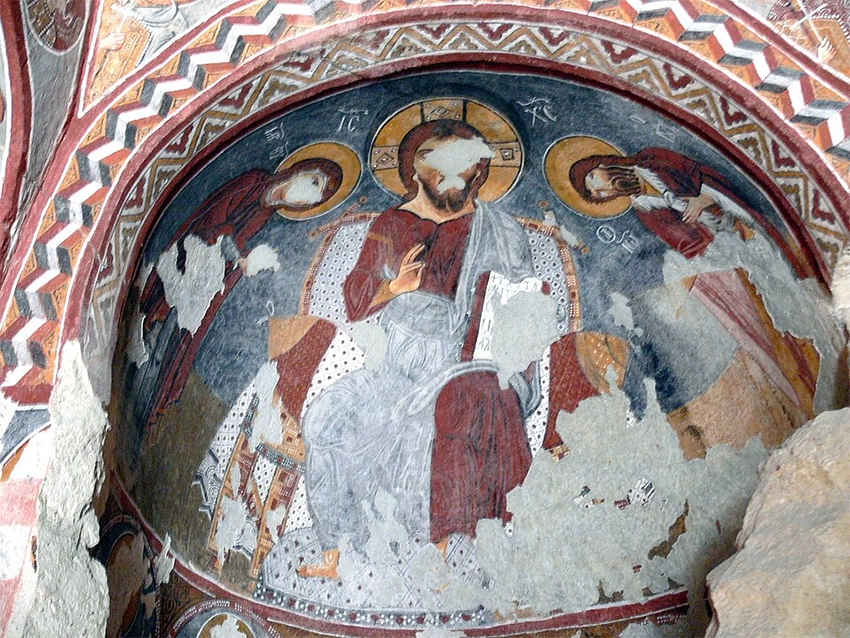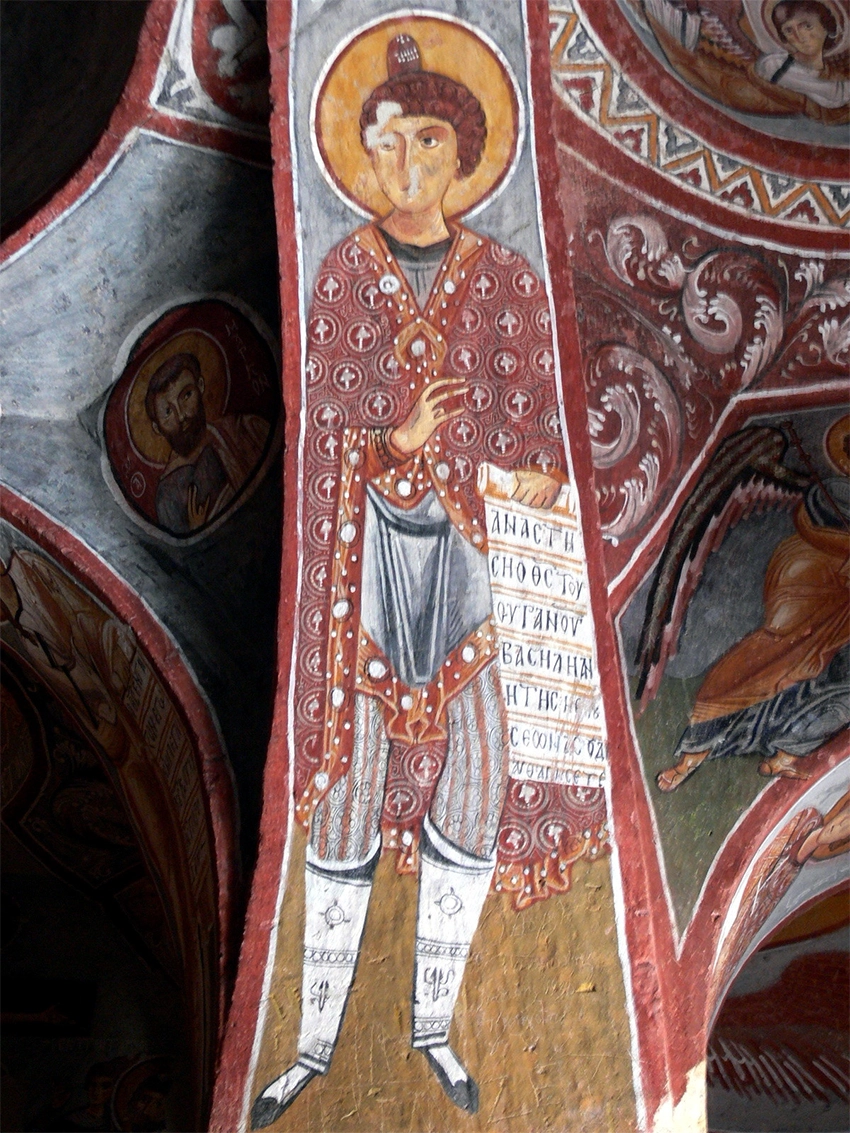Elmali, Yilanli & Carikli Churches
Cappadocia Rock-Cut Churches: Elmali, Yilanli and Carikli
The rock-hewn churches of Cappadocia are among the region’s most important cultural treasures. Within the Göreme Open-Air Museum, Elmali (Apple) Church, Yilanli (Snake) Church and Carikli (Sandal) Church stand out for their architecture and fresco programs that preserve the visual language of early Christianity. Below you will find each church’s history, layout, fresco highlights and practical visiting notes.

Elmali Church
History
Built between the mid-11th and early 12th century. Restored in 1991; some sections of the paintings were damaged before conservation. The name is thought to come either from the red orb held by Archangel Michael in the dome or from nearby apple trees.
Architecture
Closed cross plan with nine small domes carried by four piers. Three apses, the main apse separated by a barrel vault. The walls imitate ashlar blocks with red painted outlines, a common Byzantine decorative trick in Cappadocia.
Frescoes
Narrative cycle from the life of Christ: Nativity, Baptism, Last Supper, Crucifixion, Ascension and more. Dominant palette features deep red, dark blue and gold accents.

Visiting
Inside the Göreme Open-Air Museum. Summer hours 08:00 to 20:00, winter 08:00 to 17:00. Museum Pass valid. Photography without flash is permitted. Hours and policies can change, check on the day of visit.
Yilanli Church
History
Dated to the early 11th century. The apse was never fully completed. Low natural light helped preserve the pigments.
Architecture
Long transverse rectangle with a barrel vault. Narthex and apse present. Interior walls are painted to mimic stone blocks and are accented with geometric motifs.
Frescoes
Takes its name from the famous “snake-women” panel where four women are punished by snakes for specific sins. Other key scenes include the Baptism of Christ, Crucifixion and Ascension.

Visiting
Part of the museum route. Entrance is through the northern passage. Ceilings are low, mind your head. Non-flash photography is generally allowed.
Carikli Church
History
Frescoes are dated to the 11th century. Architectural phases likely continued into the 12th and 13th centuries. The church’s name refers to the footprints beneath the Ascension scene.
Architecture
Cruciform plan with four small domes and two apses. At ground level there is a broad hall interpreted as a refectory. Above it stands the Chapel of Saint Catherine.
Frescoes
Sequential scenes from the life of Christ: Nativity, Baptism, Crucifixion, Ascension. The palette favors red, blue and olive-green tones.

Visiting
On a signed footpath within the museum grounds. Summer 08:00 to 19:00, winter 08:00 to 17:00. Follow wayfinding panels. The footprints under the Ascension are a popular photo spot.
Practical Notes for All Three
- All three are within the Göreme Open-Air Museum. The Museum Pass is accepted.
- Arrive early to avoid crowds, especially in summer.
- Wear grippy shoes. Floors and steps can be uneven.
- Do not use flash. A high-ISO camera helps in dim interiors.
- Opening hours and ticket rules may vary by season or event. Confirm on site.
These three churches complement each other: Elmali for its orderly cross-in-square plan and rich color, Yilanli for its moralizing “snake-women” scene and austere atmosphere, Carikli for the Ascension with footprints and the layered complex around it. Visiting all three offers a clear window into Cappadocia’s Byzantine art and devotion.



